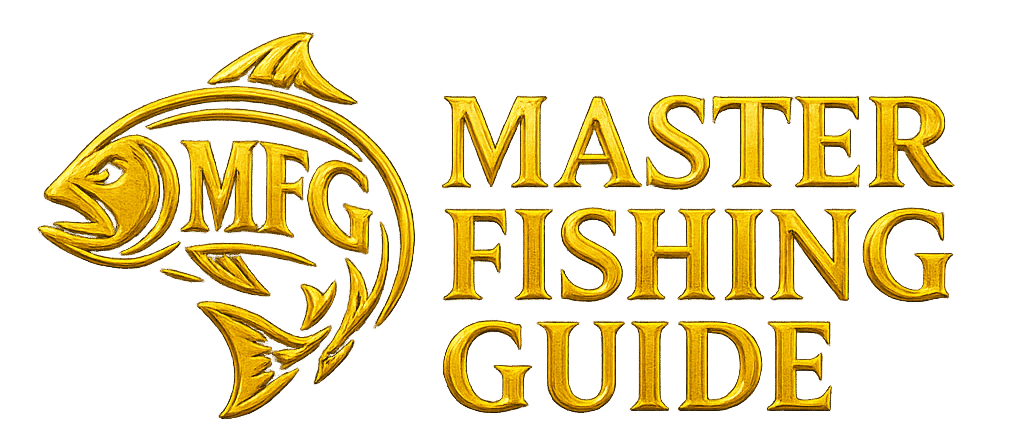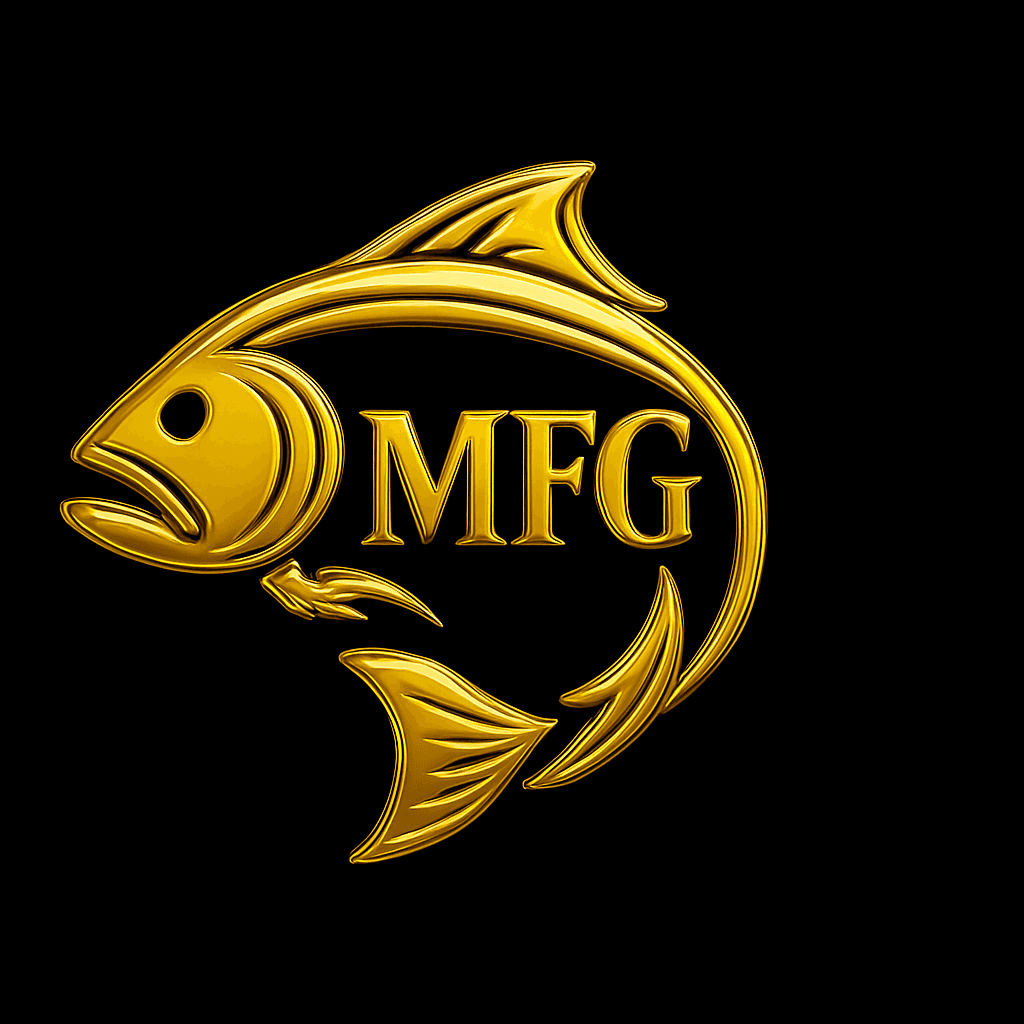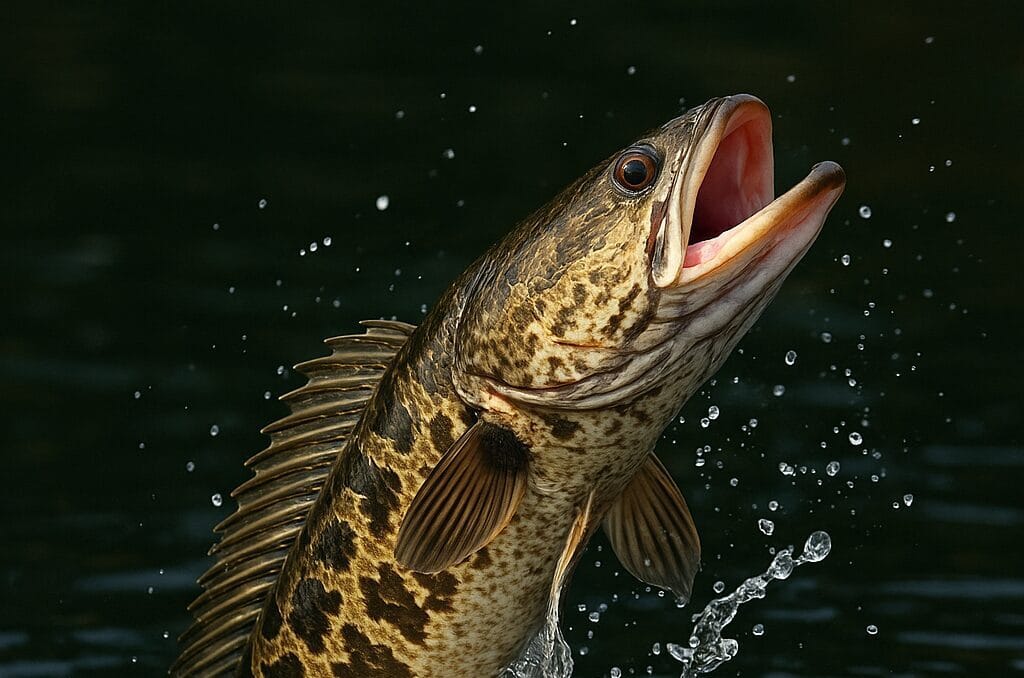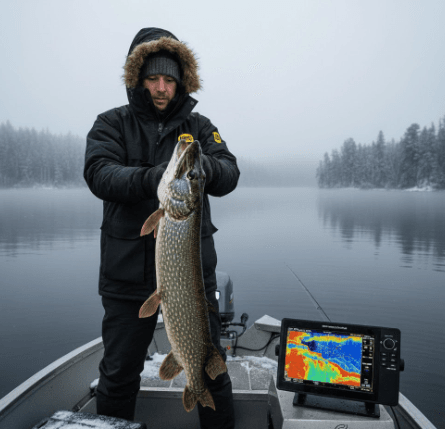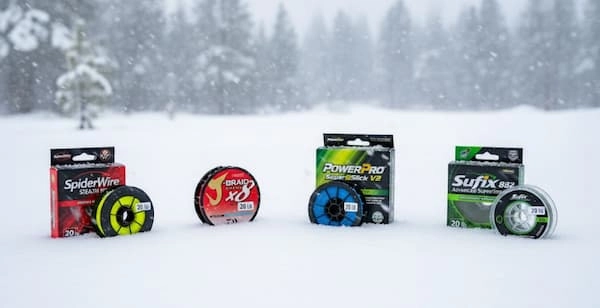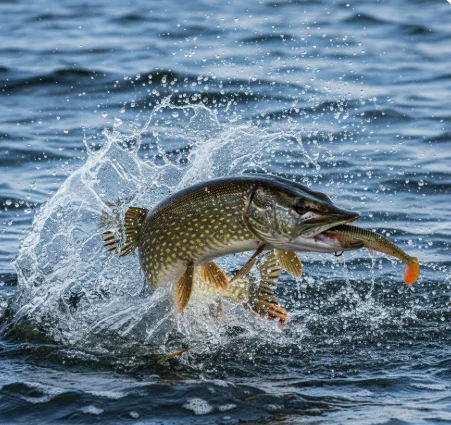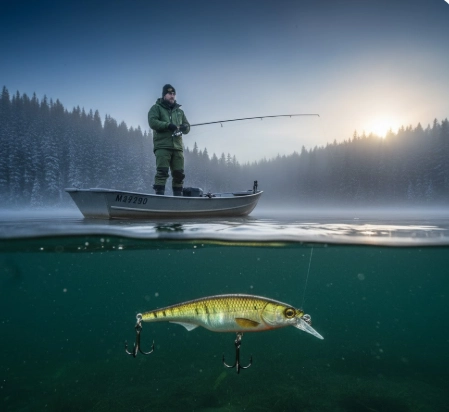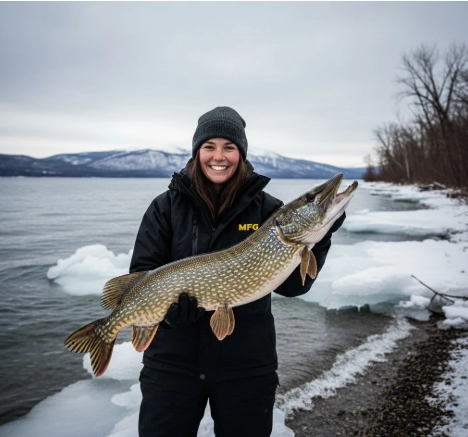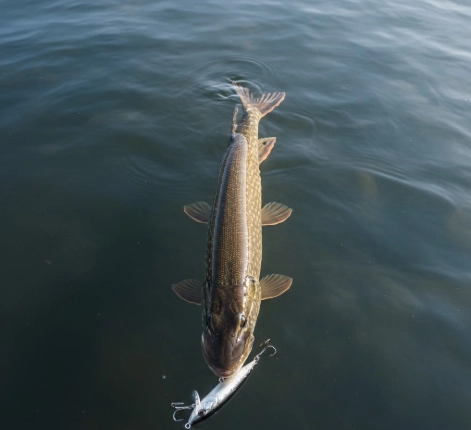Chesapeake Channa (Northern Snakehead) 2025: Rules, Spots, Lures
As an Amazon Associate, we earn from qualifying purchases — no cost to you. That’s how we keep this site running. Read more ›
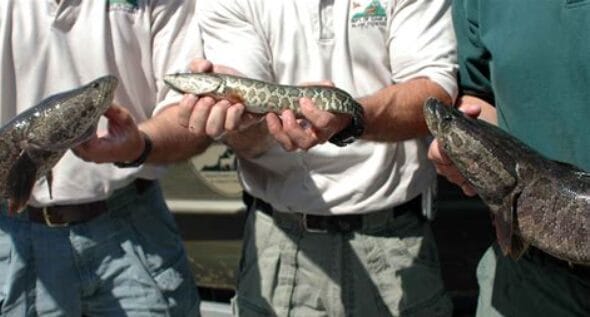
Update for 2025: Maryland officially rebranded the Northern Snakehead as “Chesapeake Channa” this year — and that’s epic news for anglers. These invasive predators hit like a freight train, fight harder than largemouth bass, and are found in rivers, creeks, and marshes with almost no limits. This updated guide shows you the latest laws by state, the best fishing hotspots, and the top lures to trigger explosive strikes — everything you need to dominate this fishery and help protect native species at the same time.
What Is the Chesapeake Channa (Northern Snakehead) and Why Everyone Is Fishing for It
Originally from Asia, snakeheads made headlines in the early 2000s as a dangerous invasive species. They can breathe air and even move short distances on land, which shocked biologists and fueled their scary reputation. But today, anglers have embraced them as an aggressive, hard-fighting sportfish. Wildlife agencies want you to catch and kill them – there are no seasons, no limits, and in many places they even ask anglers to report their catch to help track the population.
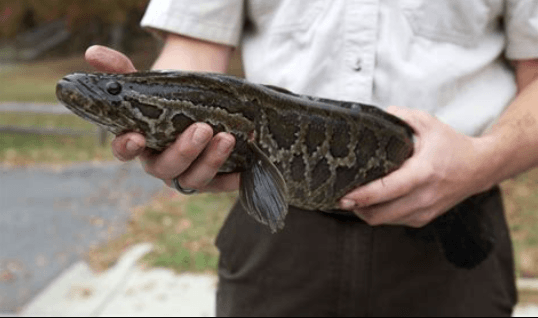
This unique situation means you can fish for Chesapeake Channa year-round with almost no restrictions – and feel good doing it, because every fish you remove helps protect native species. Snakehead fishing is booming because it combines adrenaline-pumping topwater strikes with a sense of purpose: you’re doing your part for the ecosystem while having an absolute blast.
Snakehead Fishing Laws & Rules by State
One of the biggest reasons snakehead fishing exploded is that regulations are wide open. Most states encourage anglers to catch and kill every snakehead they find. But you still need to know the rules before you hit the water — especially the strict ban on possessing live snakeheads. Here’s an updated 2025 reference table for the main snakehead states:
| State | Bag & Size Limits | Live Transport | Notes |
|---|---|---|---|
| Maryland | No limit, no closed season | Strictly illegal | Must kill if kept; immediate release allowed but harvest is encouraged. MD DNR rules. |
| Virginia | No daily limit | Illegal to possess live fish | Kill before transport; immediate release allowed but DWR asks anglers to harvest. VA DWR info. |
| Washington, D.C. | No limit | Prohibited | Catch-and-kill only — releasing a live snakehead is illegal. |
| Delaware | No limits | Illegal alive | Kill and report catches to DNREC invasive species program. |
| New Jersey | No limits | Illegal | Mandatory destruction by law — must kill every snakehead caught. |
| Pennsylvania | No limits | Illegal | Strongly encouraged to kill and report sightings to PFBC. |
| Florida | No limits | Illegal (federal offense) | Kill and either eat or dispose; report catches to FWC/USGS. |
Bottom line: there are almost no harvest restrictions on snakeheads — just never transport them alive, and if you keep one, make sure it’s dead before you leave the water. Fines for breaking these laws can be steep.
Best Gear for Snakehead Fishing (Tested & Approved by MFG)
If you want to consistently land big snakeheads, you must gear up properly. Too many newcomers try it with light bass gear and end up with broken rods or lost fish. Snakeheads fight dirty – they run into weeds, wrap around logs, and thrash like crazy. Here is the exact gear we recommend after hundreds of hours on the water, and why it works.
Best Rod for Snakehead Fishing
Go with a 7’0”–7’3” Heavy or Medium-Heavy casting rod. You need a strong backbone to rip a 10 lb snakehead out of lily pads, but a fast tip to cast accurately and absorb the strike shock. Many anglers make the mistake of using medium power rods and end up snapping them or failing to set the hook in those bony jaws.
Our top pick is the Dobyns Fury 7’3″ Heavy Casting Rod – sensitive, light, but with serious backbone. If you want something indestructible and affordable, the Ugly Stik GX2 7’0″ MH is almost impossible to break and perfect for kayak anglers. See our full Spinning Rods Buyer’s Guide or browse the Rods Category for more comparisons before you buy.
Best Reel for Snakehead Fishing
Use a high-speed baitcaster with at least 15 lbs of drag. Snakeheads hit hard and often run toward you – you need to pick up slack instantly and winch them away from cover.
We recommend the Shimano CURADO MGL K 70HG or the slightly bigger 300 series for more line capacity. If you want a great alternative, the Daiwa Tatula 150 is smooth and strong. For tips on choosing lures and rigs, check our Lure Fishing Guide where we break down what works best in weed, wood, and shallow water.
Best Line for Snakehead Fishing
Braid only – no exceptions. Mono and fluoro stretch too much and will cost you fish. We use 40–50 lb braid in most situations, and go up to 65 lb if fishing heavy pads. Braid slices through vegetation and gives you the power hooksets you need.
Our pick is PowerPro 50 lb or Sufix 832 Braid. For knot tips and setup, see our Lure Fishing Guide where we cover braid-to-leader knots in detail.
Best Lures for Snakehead Fishing
The #1 lure is a hollow-body frog – nothing beats a topwater blow-up in the pads. Keep it simple: one dark (black) and one bright (white/chartreuse) frog cover most situations.
Our go-to is the Booyah Pad Crasher or SPRO Bronzeye Frog. Trim the legs a bit shorter to improve hookup ratio. When a snakehead hits, swing hard – you have to drive those hooks through bone.
Secondary lures: Z-Man ChatterBait for covering water and finding big fish, Buzzbait at dawn/dusk for insane surface strikes, and Zoom Super Fluke (bubblegum) as a follow-up when a fish misses your frog. More lure breakdowns can be found in our Lure Fishing Guide.
Accessories You Shouldn’t Skip
– Fish Grips & Long Pliers: Keep your fingers safe. Snakeheads thrash and have teeth.
Rapala Fish Grip is cheap insurance.
– Polarized Sunglasses: Spotting wakes and shadows is half the game. Don’t go blind.
– Cooler & Fillet Knife: If you plan to eat them, ice them immediately and clean with a
Rapala 7” Fillet Knife – it slides through that tough skin like butter.
Best Time & Tactics for Snakehead Fishing
Knowing when and how to target snakeheads is what separates the pros from the frustrated beginners. These fish behave differently through the seasons, and if you adjust your approach, you’ll put yourself in front of more fish and get more explosive strikes.
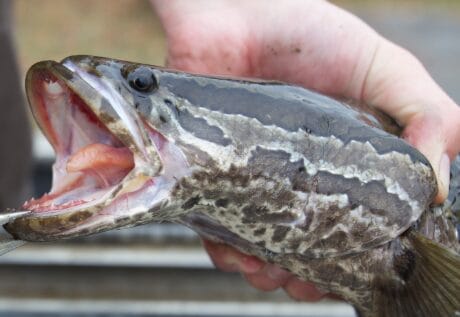
Seasonal Patterns You Must Know
Spring (March–May): As water warms into the 60s°F, snakeheads move shallow and start feeding aggressively. This is also spawning season — if you see orange fry balls near the bank, cast a frog or fluke close to them. The guarding parent will attack out of pure rage. This is one of the easiest times to catch a true trophy.
Summer (June–August): Peak season. Snakeheads are fully active and topwater frogs dominate. Unlike bass, they stay aggressive all day — don’t be afraid to fish at noon. In fact, some of the biggest blow-ups happen under a blazing sun when everyone else went home.
Fall (September–October): Fish feed up before winter. Slow down your retrieve, mix in chatterbaits and buzzbaits. This is your last chance to connect before cold weather makes them sluggish.
Winter (November–February): In northern states, snakeheads get slow and bury in deeper holes. Live bait under a bobber can work if you insist on fishing, but this is the toughest time to connect. If you can, plan a trip south (Florida canals are full of bullseye snakeheads that bite year-round).
Tide & Location Strategy
In tidal rivers, fish the mouths of creeks on a falling tide. Snakeheads will stack up waiting for bait to be flushed out. At high tide, they may push deep into flooded grass where you can’t reach them — switch to frogs and cover water.
Look for vegetation, shade, and shallow cover. Snakeheads are ambush predators — they sit under mats, under duckweed, or by laydowns waiting for prey. If you see a swirl, wake, or hear a “gulp” sound (they breathe air!), cast past it and work your lure back. Many snakeheads give away their position before you even cast.
Presentation & Hookset Tips
– Cast long and accurate: Keep your distance — the closer you get, the more likely you’ll spook the fish.
– Work the strike zone, then reel fast: Don’t waste time working a frog all the way back. Cover water quickly and put your lure in as many strike zones as possible.
– Follow up missed strikes: Always have a second rod rigged with a fluke. Cast right back — snakeheads often hit again if you give them another shot.
– Hookset like you mean it: Snakeheads have bony mouths. When they hit, swing hard with both arms and keep pressure until the fish is in the net.
Treat every cast like a hunt — be quiet, watch for signs, and be ready to react instantly. That mindset is what turns casual anglers into consistent snakehead killers.
Best Time to Catch Snakehead at Night
Night fishing for snakehead is not just possible — it can be incredible if you pick the right conditions. Snakeheads are visual hunters, but they stay active after dark, especially in warm summer months. The key is to know when and where they feed at night.
Best Time of Night to Target Snakeheads
The bite is best during the first two hours after sunset and again around dawn. On full moon nights, they may stay active longer because they can see better. Cloudy, humid summer nights are ideal — snakeheads move shallow to hunt when boat traffic dies down and the water calms.
Best Lures for Night Fishing
Use lures that create vibration and noise so the fish can find them:
- Black Hollow-Body Frog: Creates a strong silhouette against the night sky — easy for snakehead to track.
- Buzzbaits: Perfect for covering water fast — the surface commotion draws crushing strikes.
- Chatterbaits: When frog bite slows, throw a vibrating jig parallel to weed edges — the sound triggers reaction bites.
Tips for Safe & Effective Night Fishing
– Use a headlamp with red light mode: Red light doesn’t spook fish like white light does.
– Listen for surface pops: You will often hear snakeheads gulping air before you see them — cast past the sound and retrieve through the area.
– Fish quieter spots: Backwaters and shallow coves are perfect — less boat noise and better ambush habitat.
– Bring a net: Landing a thrashing snakehead at night without a net is asking for trouble.
Best Places to Catch Snakehead
Location is everything with this fish. They thrive in slow, weedy water where they can ambush prey — so you need to think like a predator hunter. The good news: there are several well-known hotspots where anglers consistently land big ones.
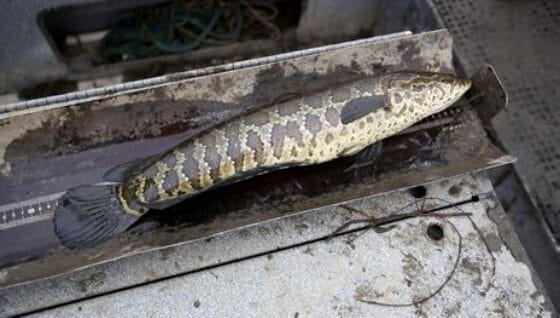
Top Hotspots to Try
- Potomac River, MD/VA: The most famous fishery — tidal creeks and backwaters hold giants.
- Blackwater National Wildlife Refuge (MD): Shallow marshes are packed with fish, perfect for kayak fishing.
- Delaware Canal & Tributaries: Good bank access and steady numbers.
- Florida Canals: The only place you can target bullseye snakehead year-round.
How to Find Your Own Honey Holes
– Use Google Maps satellite view to scout shallow, weedy creeks.
– Join local Facebook fishing groups — anglers often share fresh reports and photos.
– Look for public boat ramps near tidal rivers and explore from there.
– Small boats or fishing kayaks
give you access to quiet backwaters that bank anglers can’t reach.
Snakehead vs Bass – How They Compare
Many anglers who enjoy bass fishing end up chasing these aggressive predators because they share the same waters and hit many of the same lures. But they are very different experiences on the end of your line. Here’s how they stack up side by side:
| Category | Snakehead | Largemouth Bass |
|---|---|---|
| Fight Power | Explosive topwater strikes, bulldogs into weeds, relentless head shakes | Strong fight, often one jump then steady pull |
| Average Size | 5–10 lbs common, 15+ possible | 2–5 lbs common, 8+ is a trophy |
| Habitat | Weedy backwaters, tidal creeks, shallow marshes | Lakes, ponds, rivers with cover (wood, grass, docks) |
| Table Quality | Firm, white meat — excellent eating | Good if iced quickly, but can taste muddy in summer |
As one angler put it on Reddit: “Once you catch one of these, bass feel boring.” That doesn’t mean you have to pick sides — many anglers bring a frog setup to target both on the same trip.
Do You Have to Kill Snakehead Fish?
In most states, it is illegal to transport this species alive. That means if you decide to keep one, you must humanely dispatch it on the spot. Some areas, like Maryland, actively encourage anglers to harvest every fish they catch because these predators put heavy pressure on native species.

The recommended method is a quick strike to the head or immediate icing in a cooler. Returning them alive to the water can lead to legal trouble — fines can be steep. You can check the latest rules directly from Maryland DNR or your local fish and wildlife agency.
Ethically, removing them is the right call — every fish you take out helps protect bass, bluegill, and other native gamefish. Plus, as we covered above, they are excellent table fare, so there’s no reason to let them go.
Snakehead Fishing FAQ
Are Snakehead Dangerous?
No — they are not dangerous to humans in open water. They do have sharp teeth and can thrash violently when landed, so always use pliers or a fish grip. The only risk is handling injury, not an attack.
Do Snakehead Bite Humans?
They will not bite you while swimming — they are shy around humans. Bites only happen when handling a live fish carelessly. Use long-nose pliers and keep fingers away from the mouth.
Can You Eat Snakehead Raw?
It is a white, firm-fleshed fish that could be used for sushi-style dishes, but it must be properly frozen first to kill parasites — just like any freshwater fish. Most anglers prefer to cook it by pan-searing or frying for best taste.
Best Bait for Snakehead in Winter
In cold months, topwater action slows down. Switch to slow-moving baits like chatterbaits, jig-and-pig combos, or live minnows. One of the most reliable options is the Z-Man ChatterBait Elite, which keeps vibration strong even at slow speeds. Work it slowly along deep edges and sunny pockets where the water is slightly warmer.
Snakehead Fishing – Key Takeaways
- Gear Up Right: Use heavy casting rods, strong braid, and high-speed reels — this fish fights dirty.
- Topwater is King: Frogs and buzzbaits cover 80% of situations — be ready with a follow-up bait after missed strikes.
- Respect the Law: You cannot transport them alive — harvest responsibly and enjoy some of the best table fare in freshwater.
- Find the Right Water: Tidal creeks, marshes, and weedy backwaters are prime — scout with Google Maps and stay quiet on approach.
- Adapt with Seasons: Fish shallow in spring, cover water in summer, slow down in winter with chatterbaits or jigs.
Join the Master Fishing Guide Community
This guide is just the start — the real fun begins when you share your own experiences. Post a picture of your biggest catch on our Master Fishing Guide Facebook Page and connect with other anglers who are just as obsessed with chasing this incredible fish.
If you found this guide helpful, share it with a fishing buddy and spread the word — the more we target this invasive predator, the healthier our native fisheries will be. And don’t forget to check out the gear we recommended above — a solid setup and the right lures can be the difference between a good day and a fish-of-a-lifetime story.
Tight lines and good luck — now get out there and make some topwater explosions happen!
